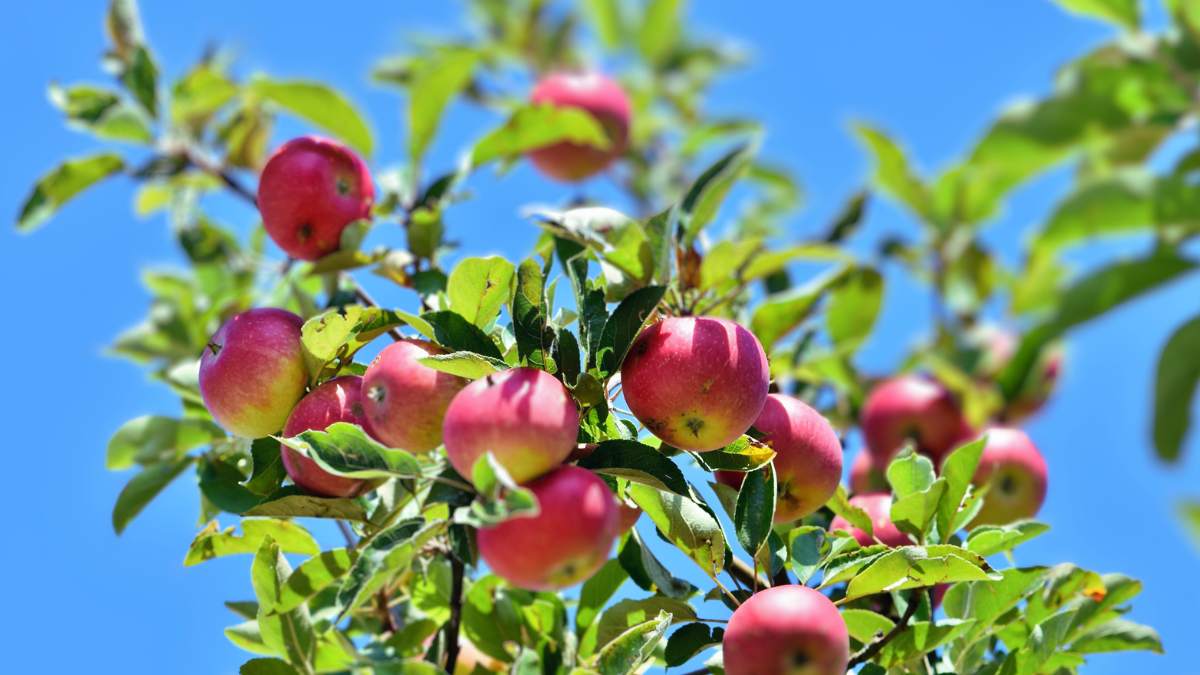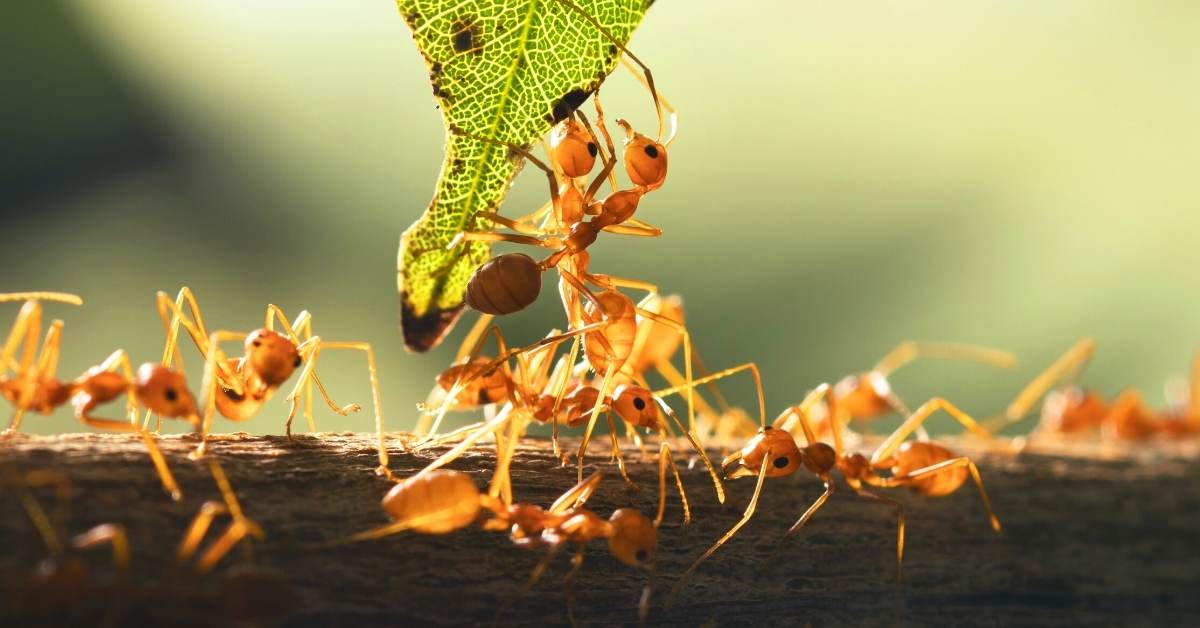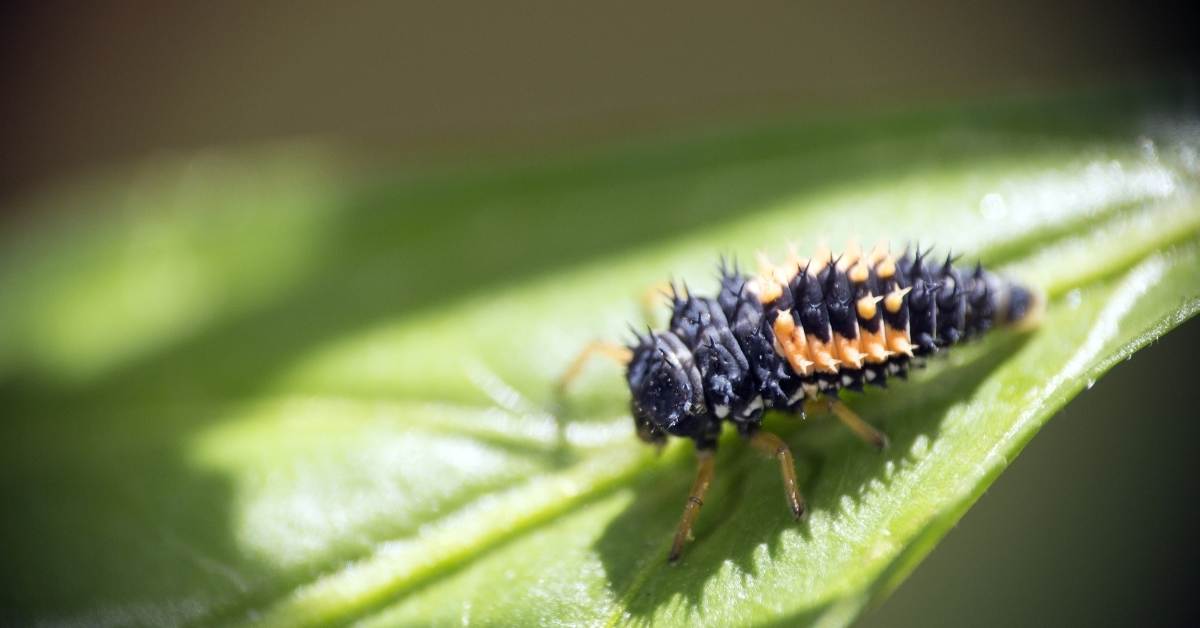Do you love apple trees? If so, you are not alone. Apple trees are one of the most popular and rewarding fruit trees to grow in your garden. They can provide you with fresh and delicious apples, as well as shade, beauty, and wildlife habitat. But growing apple trees is not always easy. Apple trees are prone to many diseases that can affect their health and productivity. Some diseases can even kill your trees if left untreated.
That’s why it’s important to know how to diagnose and cure common apple tree problems, as well as how to prevent them in the first place. In this article, we will show you everything you need to know about apple tree diseases, from fungal infections to insect infestations. You will learn how to spot the signs of disease, what causes them, and how to treat them effectively. You will also discover some preventive measures to keep your apple trees healthy and happy. Whether you are a beginner or an expert gardener, this article will help you grow beautiful and delicious apples.
How to diagnose apple tree diseases
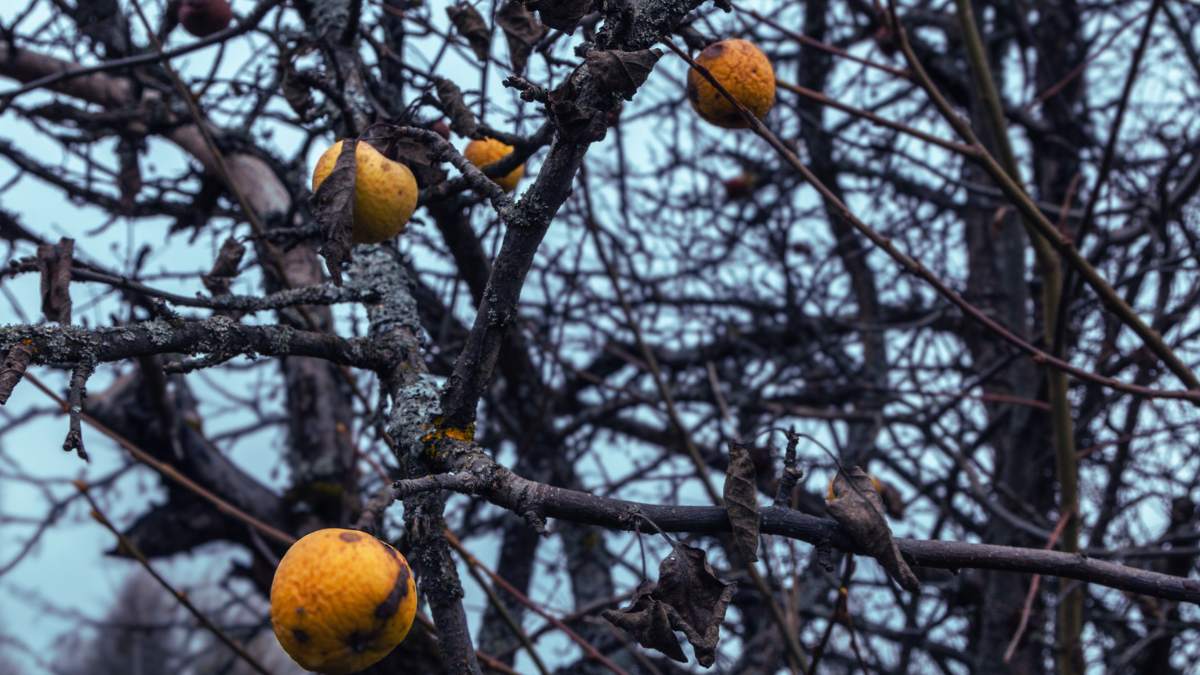
One of the first steps to growing healthy apple trees is to diagnose any diseases that may affect them. Apple tree diseases can have different symptoms and causes, depending on the type and severity of the infection. Some diseases may only cause cosmetic damage, while others may reduce the quality and quantity of your apples. Some diseases may even spread to other plants or animals in your garden. That’s why it’s crucial to identify and treat apple tree diseases as soon as possible. Let’s discover how to diagnose apple tree diseases by identifying the symptoms and determining the causes.
How to identify the symptoms of different diseases
The most obvious way to diagnose apple tree diseases is to look for any signs of abnormality or damage on your trees. Different diseases can affect different parts of your trees, such as the leaves, branches, fruits, or roots. Some diseases can also cause general symptoms, such as wilting, stunting, or yellowing.
Common apple tree diseases and their symptoms:
Apple Scab: This is a fungal disease that causes olive-green or black spots on the leaves and fruits. The spots may grow larger and merge together, forming a scabby crust. The infected leaves may curl, drop, or turn yellow. The infected fruits may crack, rot, or fall prematurely.
Fire blight: This is a bacterial disease that causes the branches and twigs to die back and turn black as if scorched by fire. The leaves and flowers may also wilt and turn brown or black. The infected branches may ooze a sticky liquid that attracts insects.
Powdery mildew: This is a fungal disease that causes a white or gray powdery coating on the leaves, shoots, buds, or fruits. The infected parts may become distorted, stunted, or discolored. The infected fruits may develop russeting or corky spots.
Cedar-apple rust: This is a fungal disease that requires two hosts: apple trees and juniper trees. It causes yellow or orange spots on the upper surface of the leaves and brown or black spots on the lower surface. The spots may grow larger and develop hair-like projections. The infected leaves may drop early. The infected fruits may also develop spots or cracks.
Anthracnose: This is a fungal disease that causes dark brown or black spots on the leaves, fruits, and twigs of apple trees. The spots may expand and form cankers or lesions that ooze pinkish or orange spores. The infected leaves may curl, drop, or turn yellow. The infected fruits may rot or fall prematurely.
Bitter rot: This is also a fungal disease that causes brown or black spots on the fruits of apple trees. The spots may grow larger and deeper, forming concentric rings or craters. The infected fruits may develop a bitter taste and a soft texture. The infected fruits may also release spores that can infect other fruits.
Canker: This is a general term for any disease that causes sunken or swollen areas on the bark or wood of apple trees. Cankers can be caused by fungi, bacteria, insects, or environmental factors. Cankers can interfere with the flow of water and nutrients in the trees, causing wilting, dieback, or death of the affected parts.
Crown rot: This is a fungal disease that affects the roots and lower trunk of apple trees. It causes the bark and wood to decay and become soft and spongy. The infected parts may also ooze a foul-smelling liquid. The infected trees may show signs of stress, such as stunting, yellowing, or dropping of leaves and fruits.
Black rot: This is a fungal disease that causes black spots on the leaves, fruits, and branches of apple trees. The spots may grow larger and form cankers or lesions that ooze black spores. The infected leaves may drop early. The infected fruits may shrivel and mummify.
Flyspeck: This is a fungal disease that causes small black dots on the surface of the fruits of apple trees. The dots may look like fly droppings or specks of dirt. The infected fruits may lose their shine and marketability.
Sooty blotch: This is a fungal disease that causes dark brown or black patches on the surface of the fruits of apple trees. The patches may look like soot or dirt. The infected fruits may lose their shine and marketability.
Collar rot: This is a fungal disease that affects the base of the trunk of apple trees. It causes the bark and wood to decay and become dark brown or black. The infected trees may show signs of stress, such as wilting, dieback, or death of the entire tree.
Apple mosaic virus: This is a viral disease that causes yellow or green mosaic patterns on the leaves of apple trees. The infected leaves may also curl, distort, or drop early. The infected trees may have reduced growth and yield.
To help you identify the symptoms of different diseases, you can use images or diagrams to compare them with your trees. You can also consult some online resources or books on apple tree diseases for more information.
How to determine the causes of diseases
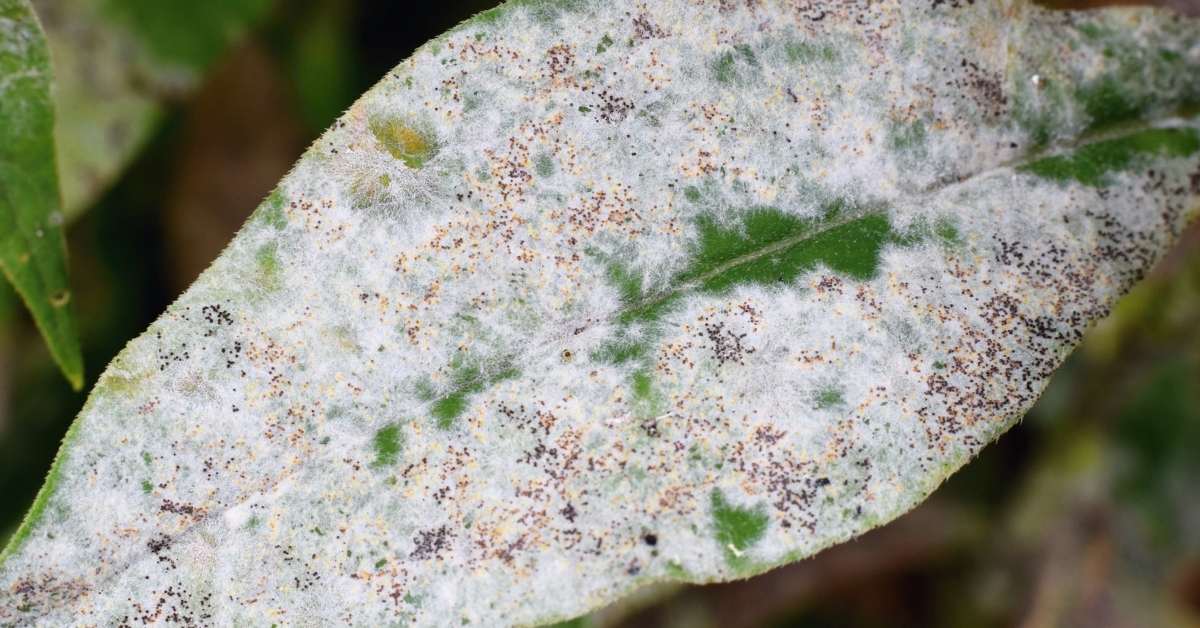
Once you have identified the symptoms of apple tree diseases, you need to determine what causes them. Knowing the causes of diseases can help you prevent or treat them more effectively. Apple tree diseases can be caused by various factors, such as fungi, bacteria, viruses, insects, mites, nematodes, etc. Some diseases can also be caused by environmental factors, such as weather, soil, water, nutrients, etc.
Fungi: Fungal diseases are usually favored by wet and humid conditions. They can spread through spores that are carried by wind, water, insects, animals, tools, etc. They can also survive in plant debris or soil for long periods of time. To determine if your apple tree has a fungal disease, you can look for signs of spores or fungal growth on the infected parts. You can also use a microscope or a magnifying glass to examine the spores or fungal structures more closely.
Bacteria: Bacterial diseases are usually favored by warm and moist conditions. They can enter through wounds or natural openings in the plants. They can also be transmitted by insects, animals, tools, etc. They can multiply rapidly and cause systemic infections in the plants. To determine if your apple tree has a bacterial disease, you can look for signs of bacterial ooze or exudate on the infected parts. You can also use a microscope or a magnifying glass to examine the bacterial cells more closely.
Viruses: Viral diseases are usually favored by stress conditions in plants. They can infect through wounds or natural openings in the plants. They can also be transmitted by insects (especially aphids), grafting, seeds, or pollen.
They can cause systemic infections in plants that are difficult to cure. To determine if your apple tree has a viral disease, you can look for signs of mosaic patterns, ringspot, mottling, distortion, or stunting on the leaves or fruits. You can also use a serological test or a molecular test to detect the presence of viral particles or genetic material in the plant tissue.
Insects: Insect pests can cause direct or indirect damage to your apple trees. Direct damage occurs when the insects feed on the leaves, branches, fruits, or roots of your trees. Indirect damage occurs when the insects transmit diseases or create wounds that allow disease entry.
Some common insect pests that can affect your apple trees are aphids, mites, scale insects, leafhoppers, leafminers, caterpillars, borers, etc. To determine if your apple tree has an insect problem, you can look for signs of feeding damage, such as holes, spots, galls, webs, or frass on the plant parts. You can also look for signs of insect presence, such as eggs, larvae, adults, or honeydew, on the plant parts.
Nematodes: Nematodes are microscopic worms that live in the soil and feed on the roots of your trees. They can cause root damage that reduces the water and nutrient uptake of your trees. They can also transmit diseases or create wounds that allow disease entry.
Some common nematodes that can affect your apple trees are root-knot nematodes, lesion nematodes, dagger nematodes, etc. To determine if your apple tree has a nematode problem, you can look for signs of root damage, such as galls, lesions, swellings, or decay on the root system. You can also use a soil test or a root test to detect the presence of nematodes in the soil or root tissue.
Environmental factors: Environmental factors are the physical and chemical conditions that affect your trees and their growth. They include weather, soil, water, nutrients etc. Environmental factors can affect the health and productivity of your trees, as well as their susceptibility or resistance to diseases. Some environmental factors can cause abiotic diseases or disorders that are not caused by living organisms but by physical or chemical stress.
Some common environmental factors that can affect your apple trees are frost, drought, flooding, wind, hail, sunburn, nutrient deficiency, nutrient toxicity, soil pH, soil salinity, etc. To determine if your apple tree has an environmental problem, you can look for signs of stress or injury, such as wilting, yellowing, browning, cracking, or dropping on the plant parts. You can also use a weather station or a soil test to monitor the environmental conditions around your trees.
When you know the causes of diseases, you can prevent or treat them more effectively and improve the health and productivity of your apple trees.
How to prevent apple tree diseases
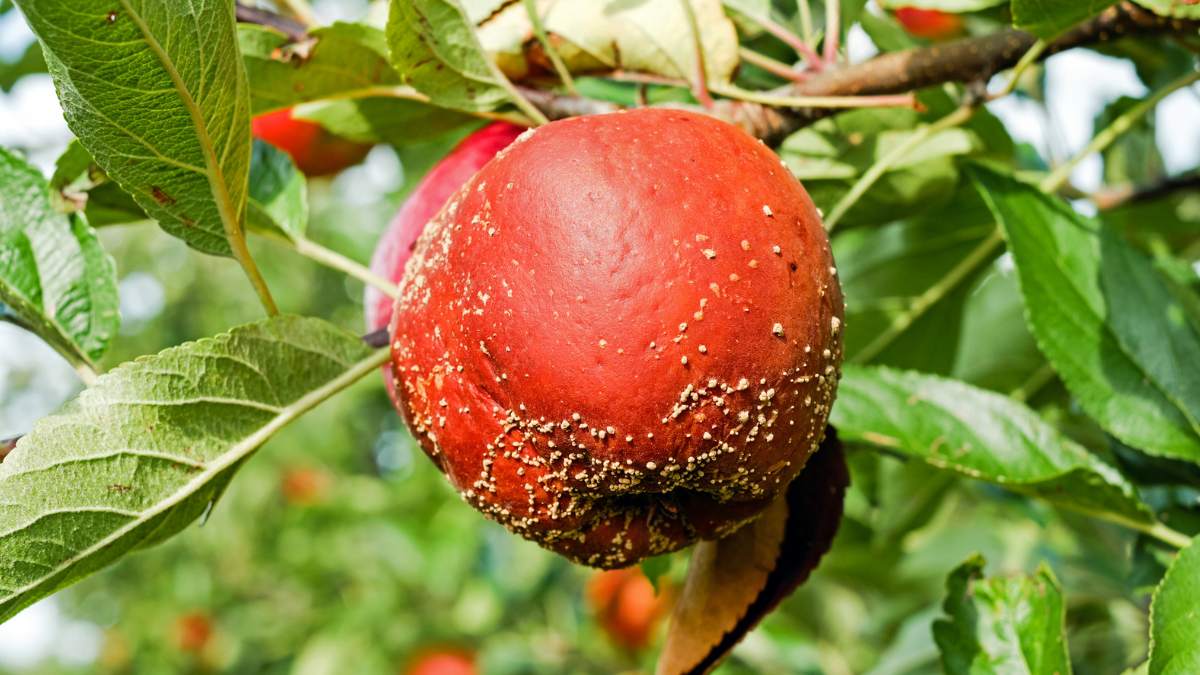
The best way to deal with apple tree diseases is to prevent them from happening in the first place. Prevention is easier and cheaper than cure, and it can also save you a lot of time and trouble. Prevention can also help you protect your apple trees from future infections and improve their overall health and productivity. In this section, we will show you how to prevent apple tree diseases by choosing disease-resistant varieties and maintaining proper cultural practices.
How to choose disease-resistant varieties
One of the most effective ways to prevent apple tree diseases is to choose varieties that are resistant or tolerant to common diseases. Resistance means that the variety can resist or fight off the infection, while tolerance means that the variety can endure or cope with the infection without serious damage. Choosing disease-resistant varieties can help you reduce or eliminate the need for chemical treatments, as well as improve the quality and quantity of your apples.
Some examples of disease-resistant apple varieties:
Enterprise
This is a red apple variety that is resistant to scab, fire blight, cedar-apple rust, and powdery mildew. It has a crisp and juicy flesh with a spicy flavor. It is good for fresh eating, cooking, and storing.
Freedom
This is also a red-striped apple variety that is resistant to scab, fire blight, cedar-apple rust, and mildew too. It has a firm and sweet flesh with a mild flavor. It is good for fresh eating, cooking, and juicing.
GoldRush
This is a yellow-green apple variety that is resistant to scab, fire blight, cedar-apple rust, and mildew. It has a hard and tart flesh with a honey flavor. It is good for fresh eating, cooking, baking, and storing.
Liberty
This is a red-blushed apple variety that is resistant to scab, fire blight, cedar-apple rust, and mildew. It has a crisp and juicy flesh with a balanced flavor. It is good for fresh eating, cooking, and juicing. These are just some examples of disease-resistant apple varieties.
There are many other varieties that are resistant or tolerant to different diseases, such as Crimson Crisp, Honeycrisp, Jonafree, Pristine, etc. To find out more about disease-resistant apple varieties, you can consult some online resources or books on apple tree varieties for more information.
How to maintain proper cultural practices
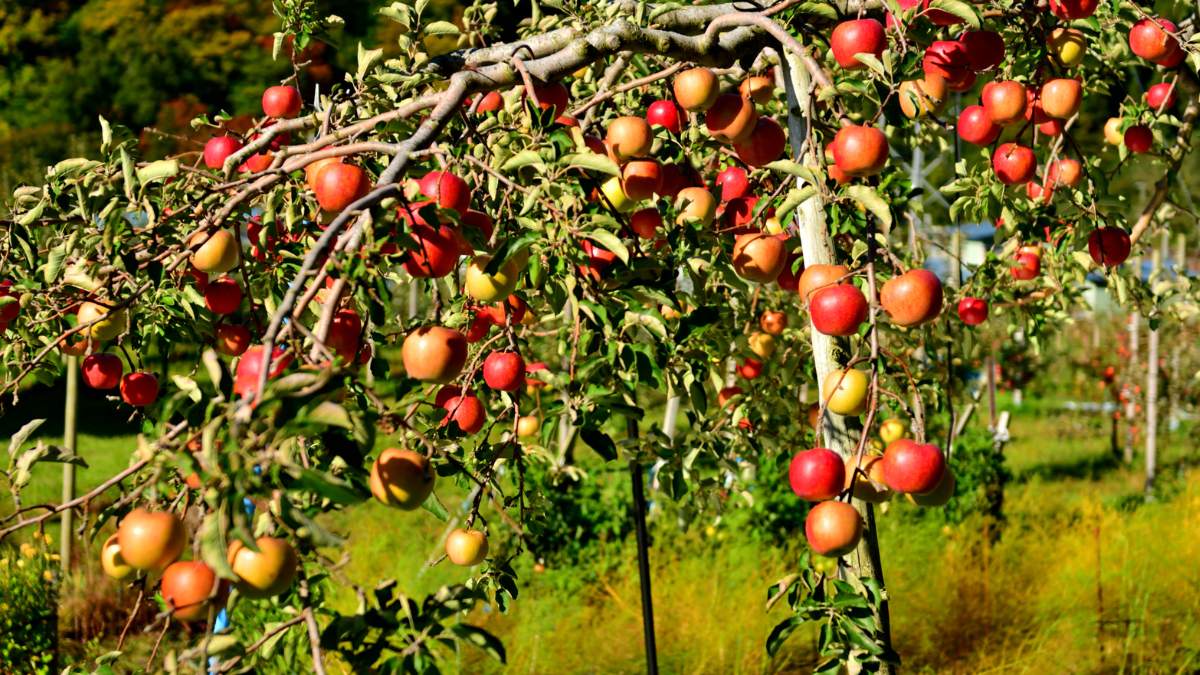
Another effective way to prevent apple tree diseases is to maintain proper cultural practices for your trees. Cultural practices are the methods and techniques that you use to grow and care for your plants. They include planting, watering, fertilizing, pruning, mulching, etc. Maintaining proper cultural practices can help you create a healthy and favorable environment for your trees, as well as reduce or eliminate the factors that can trigger or worsen disease development.
How to maintain proper cultural practices for apple trees:
Planting
Plant your apple trees in a sunny and well-drained location with good air circulation. Avoid planting your trees in low-lying or wet areas where water can accumulate or stagnate. Also, avoid planting your trees near juniper trees or other hosts of cedar-apple rust. Space your trees according to their mature size and shape to allow enough room for growth and light penetration.
Watering
Water your apple trees regularly and deeply during the growing season, especially during dry spells or droughts. Avoid watering your trees too frequently or too lightly, as this can cause shallow rooting or water stress.
Also avoid watering your trees overhead or late in the day, as this can create wet and humid conditions that favor fungal diseases. Instead, water your trees at the base or use drip irrigation to deliver water directly to the roots. Monitor the soil moisture and adjust your watering schedule according to the weather and the season.
Fertilizing
Fertilize your apple trees moderately and appropriately according to their age and needs. Avoid over-fertilizing or under-fertilizing your trees, as this can cause excessive or weak growth or nutrient deficiencies. Also avoid fertilizing your trees late in the season or with high-nitrogen fertilizers, as this can stimulate tender growth that is susceptible to frost damage or disease infection.
Instead, use a balanced fertilizer that contains nitrogen, phosphorus, potassium, and other micronutrients. Apply the fertilizer in early spring or after harvest, and follow the label instructions for the amount and frequency of application.
Pruning
Prune your apple trees annually and properly to remove any dead, diseased, damaged, or crossing branches. Pruning can help you improve the shape and structure of your trees, as well as increase the light and air circulation within the canopy.
Pruning can also help you remove any sources of infection or infestation, as well as prevent any wounds or injuries that can allow disease entry. Prune your trees in late winter or early spring before the buds break, and use sharp and clean tools to make clean and smooth cuts. Dispose of any pruned material away from your trees or burn it to prevent disease spread.
Mulching
Mulch your apple trees with a layer of organic material such as wood chips, straw, leaves, or compost. Mulching can help you conserve soil moisture, moderate soil temperature, suppress weeds, and enrich soil fertility. Mulching can also help you prevent soil erosion or compaction, as well as protect your trees from mechanical damage or root rot.
Apply a 2-4 inch layer of mulch around the base of your trees, leaving a few inches of space around the trunk to prevent moisture buildup or rodent damage. Replenish the mulch as needed throughout the year.
These are some tips on how to maintain proper cultural practices for your apple trees. When you apply these approaches, you can create a healthy and favorable environment for your trees and prevent or reduce the occurrence or severity of apple tree diseases.
How to cure apple tree diseases
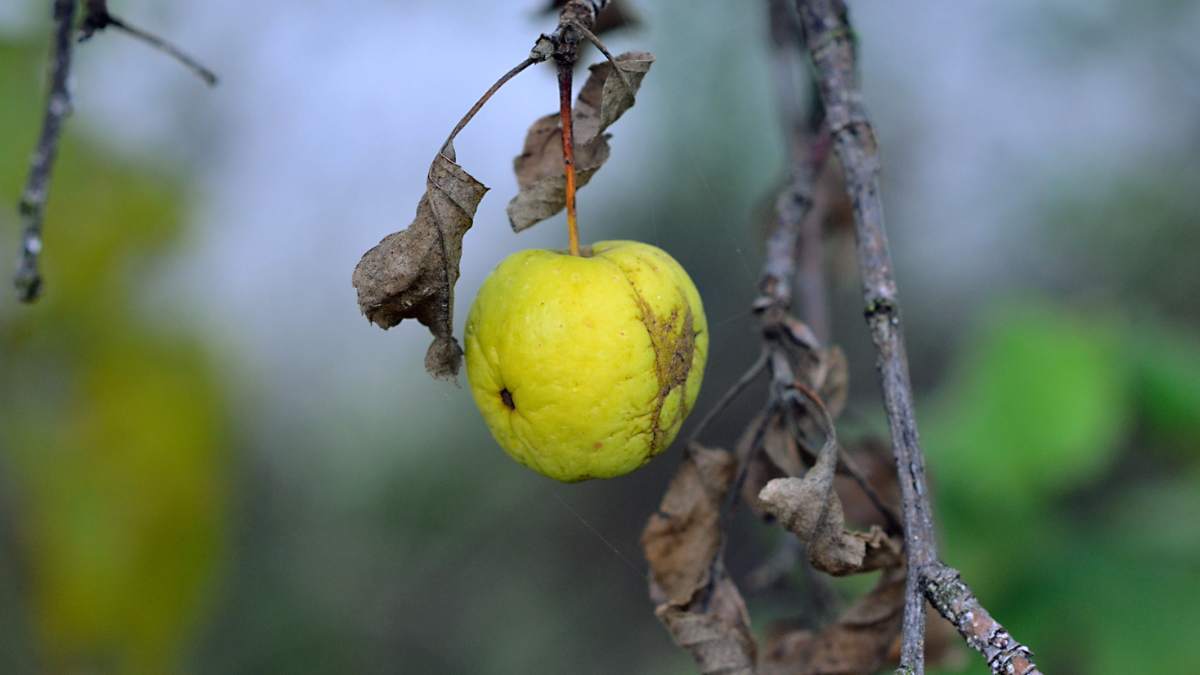
Sometimes, despite your best efforts, your apple trees may still get sick. When that happens, you need to act quickly and effectively to cure your apple trees and restore their health and productivity. Curing apple tree diseases can be challenging and costly, depending on the type and severity of the infection. But don’t worry; we have you covered.
Let’s see how to cure apple tree diseases by using organic or natural remedies and chemical or synthetic treatments.
How to use organic or natural remedies
One of the safest and most eco-friendly ways to cure apple tree diseases is to use organic or natural remedies that you can make or buy. Organic or natural remedies are usually derived from plants, animals, minerals, or microbes that have anti-fungal, anti-bacterial, or anti-viral properties.
They can help you control or eliminate the disease-causing agents without harming your trees, your health, or your environment. They can also help you enhance the immune system and the resistance of your trees.
Some examples of organic or natural remedies that you can use for your apple trees:
Neem oil
This is a vegetable oil extracted from the seeds of the neem tree. It has anti-fungal, anti-bacterial, and insecticidal properties. It can help you prevent or treat scabs, powdery mildew, fire blight, and other fungal or bacterial diseases.
It can also help you repel or kill aphids, mites, scale insects, and other pests that can transmit viral diseases. To use neem oil, you can mix 2 tablespoons of neem oil with 1 gallon of water and a few drops of dish soap.
Spray the solution on your trees every 7-14 days until the disease is gone.
Baking soda
This is a common household ingredient that has anti-fungal and alkalizing properties. It can help you prevent or treat powdery mildew, scab, and other fungal diseases. It can also help you neutralize the acidity of the soil and improve its drainage. To use baking soda, you can mix 1 tablespoon of baking soda with 1 gallon of water and a few drops of dish soap.
Spray the solution on your trees every 7-10 days until the disease is gone.
Vinegar
This is a common household ingredient that has anti-fungal and acidifying properties. It can help you prevent or treat fire blight, cedar-apple rust, and other fungal or bacterial diseases. It can also help you lower the pH of the soil and make it more suitable for your trees. To use vinegar, you can mix 1 cup of vinegar with 1 gallon of water and a few drops of dish soap.
Spray the solution on your trees every 7-10 days until the disease is gone.
These are just some examples of organic or natural remedies that you can use for your apple trees. There are many other remedies that you can make or buy, such as garlic, horsetail, chamomile, cinnamon, etc.
To find out more about organic or natural remedies for apple tree diseases, you can consult some online resources or books on organic gardening for more information.
How to use chemical or synthetic treatments
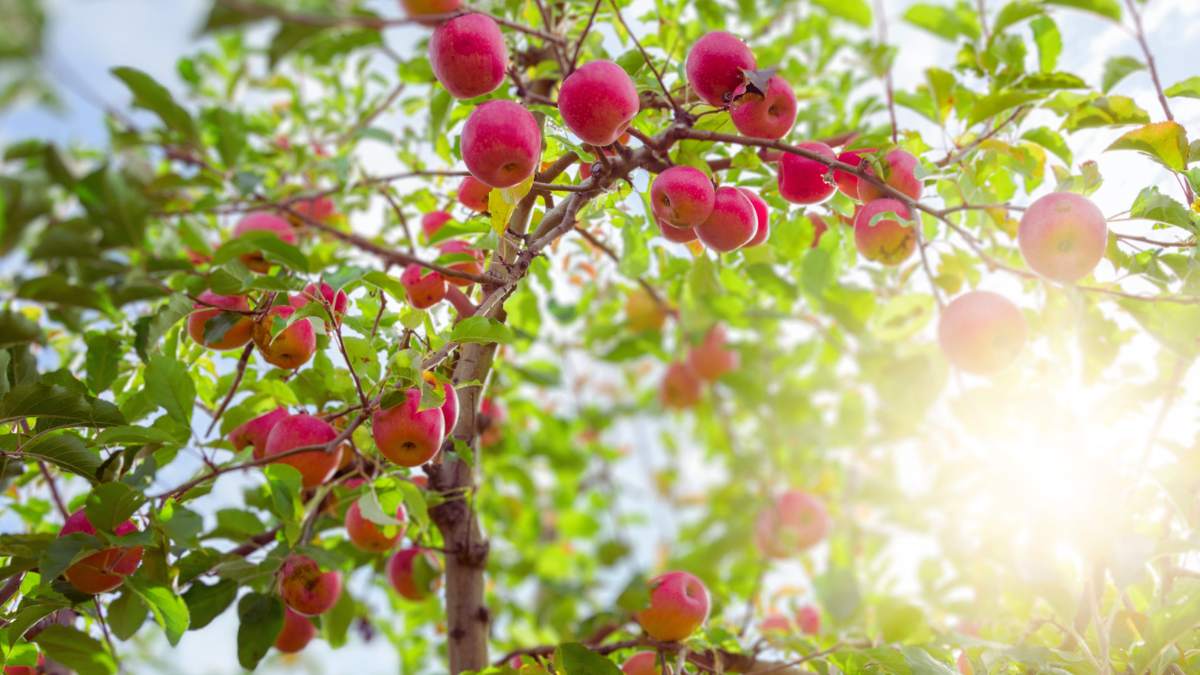
Another way to cure apple tree diseases is to use chemical or synthetic treatments that you can buy or apply. Chemical or synthetic treatments are usually manufactured from synthetic or artificial substances that have anti-fungal, anti-bacterial, or anti-viral properties.
They can help you control or eliminate disease-causing agents quickly and effectively. However, they can also have some potential risks and drawbacks, such as toxicity, resistance, environmental impact, etc. That’s why you need to use them carefully and responsibly.
Chemical or synthetic treatments that you can use for your apple trees:
Fungicides
These are chemicals that can kill or inhibit the growth of fungi. They can help you prevent or treat scabs, powdery mildew, cedar-apple rust, and other fungal diseases. They can also help you protect your trees from future infections. Some common fungicides that you can use for your apple trees are copper, sulfur, lime sulfur, captan, chlorothalonil, etc.
To use fungicides, you need to follow the label instructions for the type, amount, frequency, and timing of application. You also need to wear protective gear and dispose of the waste properly.
Bactericides
These are chemicals that can kill or inhibit the growth of bacteria. They can help you prevent or treat fire blight and other bacterial diseases. They can also help you protect your trees from future infections. Some common bactericides that you can use for your apple trees are streptomycin, oxytetracycline, copper, etc. To use bactericides, you need to follow the label instructions for the type, amount, frequency, and timing of application. You also need to wear protective gear and dispose of the waste properly.
Virucides
These are chemicals that can kill or inhibit the growth of viruses. They can help you prevent or treat viral diseases that are transmitted by insects or grafting. They can also help you protect your trees from future infections. Some common virucides that you can use for your apple trees are mineral oil, insecticidal soap, pyrethrin, etc. To use virucides, you need to follow the label instructions for the type, amount, frequency, and timing of application. You also need to wear protective gear and dispose of the waste properly.
These are just some examples of chemical or synthetic treatments that you can use for your apple trees. There are many other treatments that you can buy or apply, such as horticultural oil, potassium bicarbonate, hydrogen peroxide, etc. To find out more about chemical or synthetic treatments for apple tree diseases, you can consult some online resources or books on pest management for more information.
Conclusion
Apple trees are wonderful and rewarding fruit trees to grow in your garden. They can provide you with fresh and delicious apples, as well as shade, beauty, and wildlife habitat. But apple trees are also prone to many diseases that can affect their health and productivity. Some diseases can even kill your trees if left untreated.
That’s why it’s important to know how to diagnose and cure common apple tree problems, as well as how to prevent them in the first place. In this article, we have shown you everything you need to know about apple tree diseases, from fungal infections to insect infestations.
You have learned how to spot the signs of disease, what causes them, and how to treat them effectively. You have also discovered some preventive measures to keep your apple trees healthy and happy.
I hope you have enjoyed this article and found it useful. If you have any questions or comments, please feel free to share them with us. We would love to hear from you. And if you want to learn more about apple trees or other gardening topics, please check out our other articles or subscribe to our newsletter. Thank you for reading, and happy gardening!
FAQs
How often should I spray my apple trees for diseases?
The frequency and timing of spraying your apple trees for diseases depend on the type and severity of the infection, as well as the weather and the season. Generally, you should spray your apple trees before the disease symptoms appear or when they are first noticed.
You should also spray your apple trees during critical periods of infection, such as bud break, bloom, petal fall, fruit set, etc. You should follow the label instructions for the specific product that you are using and adjust your spraying schedule according to the weather and the disease pressure.
The best way to tell if your apple tree has a fungal, bacterial, or viral disease is to look for the symptoms and signs of the infection on your tree. Fungal diseases usually cause spots, scabs, powdery coatings, or fungal growths on the leaves or fruits.
Bacterial diseases usually cause wilting, browning, blackening, or oozing on the branches or twigs. Viral diseases usually cause mosaic patterns, ringspots, mottling, distortion, or stunting on the leaves or fruits. You can also use a microscope, a magnifying glass, a serological test, or a molecular test to examine the plant tissue more closely and detect the presence of fungal spores, bacterial cells, or viral particles.
What are some natural ways to prevent apple tree diseases?
Some natural ways to prevent apple tree diseases are to choose disease-resistant varieties, maintain proper cultural practices, use organic or natural remedies, and practice good sanitation and hygiene. By doing these things, you can create a healthy and favorable environment for your trees and reduce or eliminate the factors that can trigger or worsen disease development. You can also enhance the immune system and the resistance of your trees and protect them from future infections.
What is the common disease of apples?
There is no single answer to this question, as apple trees can be affected by many different diseases caused by fungi, bacteria, viruses, insects, or environmental factors, as we have already mentioned above. However, some of the most common diseases of apples are:
Scab: This is a fungal disease that causes olive-green or black spots on the leaves and fruits of apple trees. The spots may grow larger and form cracks or scabs. The infected leaves may drop early. The infected fruits may become deformed or inedible.
Fire blight: This is a bacterial disease that causes the shoots, flowers, and fruits of apple trees to wilt and turn brown or black. The infected parts may look like they have been burned by fire. The infected parts may also ooze a sticky liquid that can spread the disease to other plants.
Powdery mildew: This is a fungal disease that causes a white or gray powdery coating on the leaves, shoots, and fruits of apple trees. The infected parts may curl, distort, or drop early. The infected fruits may have reduced size, quality, or flavor.
What causes apple tree disease?
Apple tree diseases can be caused by various factors, such as:
Pathogens: These are microorganisms, such as fungi, bacteria, viruses, or nematodes, that can infect apple trees and cause diseases. Pathogens can enter apple trees through wounds, natural openings, or insect bites. Pathogens can spread from plant to plant by wind, water, insects, animals, or human activities.
Pests: These are insects, mites, or animals that can feed on or damage apple trees and cause diseases. Pests can reduce the health and vigor of apple trees by sucking sap, chewing leaves or fruits, boring holes, or injecting toxins. Pests can also transmit pathogens from plant to plant through their feeding activities.
Environmental factors: These are abiotic factors, such as temperature, moisture, light, soil, or nutrients, that can affect apple trees and cause diseases. Environmental factors can stress or injure apple trees by causing frost damage, drought stress, sunburn, nutrient deficiency, or toxicity. Environmental factors can also create favorable conditions for pathogens or pests to thrive and infect apple trees.
What type of fungus grows on apple trees?
There are many types of fungi that can grow on apple trees and cause diseases. Some of the most common ones are:
Venturia inaequalis: This is the fungus that causes scab, one of the most widespread and destructive diseases of apple trees. It produces olive-green or black spots on the leaves and fruits of apple trees. It overwinters on fallen leaves and infects new growth in spring.
Erwinia amylovora: This is the bacterium that causes fire blight, a serious disease of apple trees that can kill entire branches or trees. It produces wilted and blackened shoots, flowers, and fruits that look like they have been burned by fire. It overwinters in cankers and infects new growth in spring or summer.
Podosphaera leucotricha: This is the fungus that causes powdery mildew, a common disease of apple trees that can reduce fruit quality and yield. It produces a white or gray powdery coating on the leaves, shoots, and fruits of apple trees. It overwinters as spores or mycelium on buds or bark and infects new growth in spring or summer.
What is the apple canker disease?
Apple canker disease is a general term for any disease that causes sunken or swollen areas on the bark or wood of apple trees. Cankers can be caused by various fungi, bacteria, insects, or environmental factors. Cankers can interfere with the flow of water and nutrients in the trees, causing wilting, dieback, or death of the affected parts. Some of the most common types of apple canker disease are:
European canker: This is caused by the fungus Neonectria ditissima. It produces dark brown or purple cankers on the branches or trunk of apple trees. The cankers may ooze a reddish liquid and have small black dots on them. The infected branches may die back or break off.
Nectria canker: This is caused by the fungus Nectria galligena. It produces brown or black cankers on the branches or trunk of apple trees. The cankers may have orange or red spore masses on them. The infected branches may die back or break off.
Cytospora canker: This is caused by the fungus Cytospora leucostoma. It produces tan or gray cankers on the branches or trunk of apple trees. The cankers may ooze a clear or amber liquid and have small black dots on them. The infected branches may die back or break off.
Why are apple tree leaves turning brown?
Apple tree leaves can turn brown for various reasons, such as:
Diseases: Some diseases, such as scab, fire blight, or anthracnose, can cause brown spots or patches on the leaves of apple trees. The infected leaves may drop early or remain attached to the branches.
Pests: Some pests, such as aphids, mites, or caterpillars, can feed on or damage the leaves of apple trees and cause them to turn brown. The affected leaves may curl, distort, or drop early.
Environmental factors: Some environmental factors, such as frost, drought, heat, or nutrient deficiency, can stress or injure the leaves of apple trees and cause them to turn brown. The stressed leaves may wilt, dry up, or drop early.
